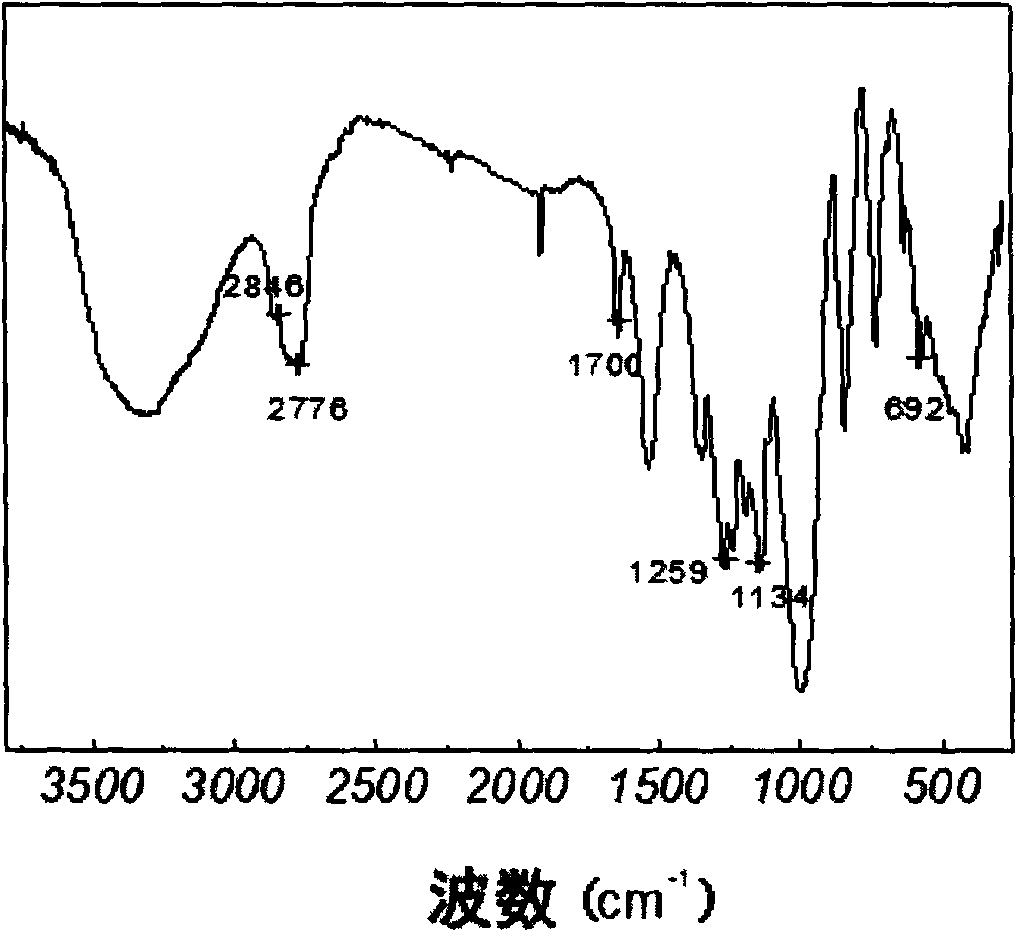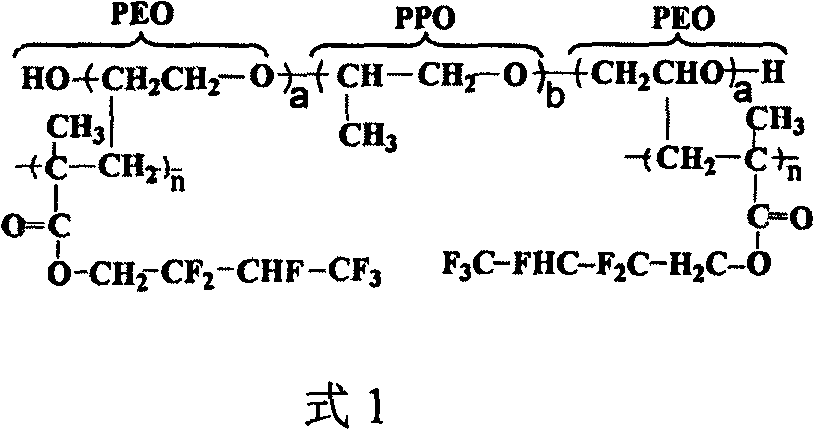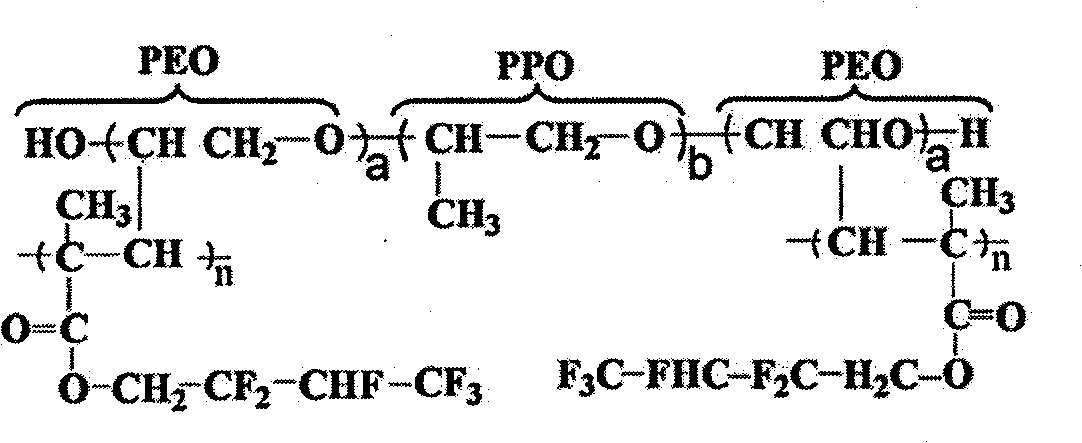Fluorine-containing amphipathic modifying material for preparing antifouling membrane and preparation method thereof
A modified material, amphiphilic technology, applied in chemical instruments and methods, membrane technology, semi-permeable membrane separation, etc., can solve the problems of unsatisfactory anti-pollution effect, serious flux attenuation, etc. Effects of fouling performance, superior membrane performance and mild process conditions
- Summary
- Abstract
- Description
- Claims
- Application Information
AI Technical Summary
Problems solved by technology
Method used
Image
Examples
Embodiment 1
[0013] 5g of poloxamer F127 block polymer (EO) 98 -(PO) 67 -(EO) 98 and 0.80g of hexafluorobutyl methacrylate (HFBMA) were placed in a three-necked flask with a stirrer, 100mL of deionized water was added, under nitrogen protection, stirred for 0.5h to form a stable emulsion, and an initiator solution (0.49g of nitric acid Cerium ammonium dissolved in 20mL 1mol / L HNO 3 Middle), after stirring at 60°C for 24h, the reaction solution was evaporated to remove water at 50°C and a vacuum of 0.1MPa, then washed with ethanol until the solid matter was completely dissolved, and then evaporated at 40°C and a vacuum of 0.1MPa Ethanol, vacuum dried at 50°C for 24h to obtain a white viscous solid (HFBMA) 4 -(EO) 98 -(PO) 67 -(EO) 98 -(HFBMA) 4 Graft copolymer, the yield is close to 95%.
Embodiment 2
[0015] 5g of poloxamer F127 block polymer (EO) 98 -(PO) 67 -(EO) 98 and 1.60g of hexafluorobutyl methacrylate (HFBMA) were placed in a three-necked flask with a stirrer, 100mL of deionized water was added, under nitrogen protection, stirred for 0.5h to form a stable emulsion, and an initiator solution (0.49g of nitric acid Cerium ammonium dissolved in 20mL 1mol / L HNO 3 Middle), after stirring at 60°C for 24h, the reaction solution was evaporated to remove water at 50°C and a vacuum of 0.1MPa, then washed with ethanol until the solid matter was completely dissolved, and then evaporated at 40°C and a vacuum of 0.1MPa Ethanol, vacuum dried at 50°C for 24h to obtain a white viscous solid (HFBMA) 8 -(EO) 98 -(PO) 67 -(EO) 98 -(HFBMA) 8 Graft copolymer, the yield is close to 95%.
Embodiment 3
[0017] 5g of poloxamer F127 block polymer (EO) 98 -(PO) 67 -(EO) 98 and 2.00g of hexafluorobutyl methacrylate (HFBMA) were placed in a three-necked flask with a stirrer, 100mL of deionized water was added, under nitrogen protection, stirred for 0.5h to form a stable emulsion, and an initiator solution (0.49g of nitric acid Cerium ammonium dissolved in 20mL 1mol / LHNO 3 Middle), after stirring at 60°C for 24h, the reaction solution was evaporated to remove water at 50°C and a vacuum of 0.1MPa, then washed with ethanol until the solid matter was completely dissolved, and then evaporated at 40°C and a vacuum of 0.1MPa Ethanol, vacuum dried at 50°C for 24h to obtain a white viscous solid (HFBMA) 10 -(EO) 98 -(PO) 67 -(EO) 98 -(HFBMA) 10 Graft copolymer, the yield is close to 95%.
PUM
 Login to view more
Login to view more Abstract
Description
Claims
Application Information
 Login to view more
Login to view more - R&D Engineer
- R&D Manager
- IP Professional
- Industry Leading Data Capabilities
- Powerful AI technology
- Patent DNA Extraction
Browse by: Latest US Patents, China's latest patents, Technical Efficacy Thesaurus, Application Domain, Technology Topic.
© 2024 PatSnap. All rights reserved.Legal|Privacy policy|Modern Slavery Act Transparency Statement|Sitemap



